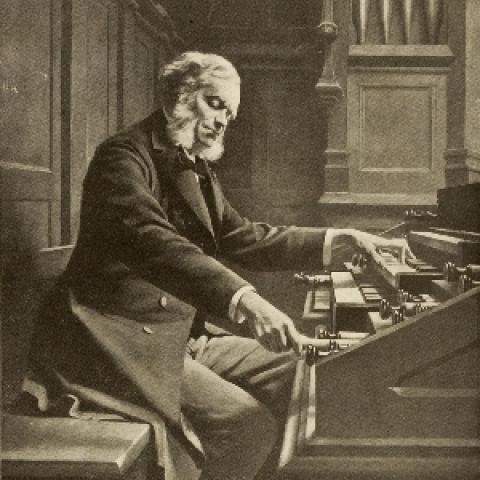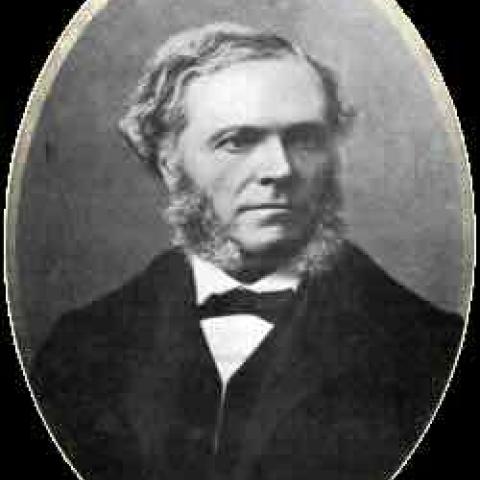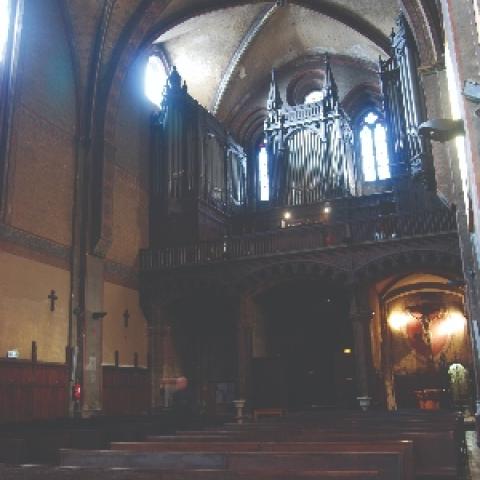Lorraine S. Brugh is senior research professor for Valparaiso University, Valparaiso, Indiana.

Editor’s note: the ideas in this article were originally presented at a workshop for the American Guild of Organists national convention in Seattle, Washington, July 6, 2022.
In the late 1970s Madame Marie-Madeleine Duruflé played a recital on the Aeolian-Skinner organ at Alice Millar Chapel on the campus of Northwestern University in Evanston, Illinois. That evening those of us who were undergraduate organ students encountered not only a new musical culture, but also a national spirit at odds with our own. We arrived in t-shirts and jeans and beheld a woman of small physical stature, but immense cultural presence. We were stunned by the idea of a French woman, dressed to the nines, a brilliant player and formidable pedagogue, completely dedicated to her art. The contrast had only begun to unfold.
After her first piece, we applauded vigorously, but she failed to appear at the edge of the balcony. Finally, she took her bow, wearing the high heels she had taken time to change from her organ shoes. We simply did not know what to make of this.
The art of French organ playing is about more than the organ or the performer. French culture is valued for its beauty and its ability to communicate that beauty, whether through an organ piece of Maurice Duruflé, a cappuccino, or a croissant.
More than a century before Madame Duruflé, César Frank also embodied this idea of beauty in his works. Whether it was a large work, like his Symphony in D Minor, or his smaller works, like the collection L’Organiste, Franck carefully crafted each piece to embody the noble ideas of the French Romantic period. Building on the organ building innovations of Aristide Cavaillé-Coll, especially with the instrument at the Basilica of Sainte-Clotilde in Paris, France, where Franck was organist from 1858 until his death in 1890, (the gallery organ was installed in 1859,) Franck was ever mindful of the ideals of the French Romantic organ, which in his own words noted, “It sounds just like an orchestra.”
Outside Sainte-Clotilde is a small city park. Tucked away on the side of the park is a sculpture by Alfred Lenoir of César Franck receiving inspiration from an angel whispering in his ear. This Grecian-style sculpture attests to the French ideal that music is a gift of God, the ultimate creator of beauty.
While best known for his large-scale organ works, Franck also composed shorter works for harmonium, all of which are playable on the organ. Often overlooked, these pieces are miniatures of Franck’s compositional style, embodying many of the same performance practices of the larger works. Titled L’Organiste, this collection of pieces was published posthumously. The individual pieces may have been conceived initially as musical ideas that were intended to develop into more extended works, or they were simply movements usable for worship on a smaller harmonium or organ.
By looking at these smaller pieces in light of Franck’s larger works, one can develop a performance practice consistent with Franck’s compositional style. This may serve as a gateway for a student to learn the style before taking on the challenge of a larger work.
I have gleaned the following principles of Franck performance practice from several sources: lessons with Karel Paukert at Northwestern University (1970–1974); a masterclass with Daniel Roth at Northwestern in 1981; and private organ study with Jean Langlais at Sainte-Clotilde in Paris in the summer of 1978, where he served as organist from 1945 until 1987. (Langlais would record the organ works of Franck during his tenure on the organ of Sainte-Clotilde.) This is not meant to be an authoritative interpretation; rather, it combines the wisdom of three teachers of Franck’s work in a way I believe is consistent.
• Daniel Roth, in his masterclass on the organ works of César Franck at Northwestern University on November 12, 1981, noted, “Base tempo is important; one always returns there.” When Roth visited Northwestern, he was titular organist in Paris at the Basilica of Sacré Coeur de Montmartre. In 1985 he accepted the position of titular organist at the church of Saint Sulpice in Paris, where he was recently granted emeritus status. Roth noted that Franck’s pieces have a framework, and the performer’s role is to attend to that framework and not get lost in expressive details. For the American students at his Northwestern masterclass this important insight shaped our future performances. We regarded freedom, rubato, and expressiveness in French Romantic works, and most especially Franck, with new eyes.
• Enlargement of initial rests to clarify the melody—cf. Choral No. 1 in E major, FWV 38, and L’Organiste, “Sept pièces en ut majeur et ut mineur,” #1, “Poco allegretto” in C major.
Franck often begins a melody after establishing a chord on a downbeat. Langlais made the point that this sort of chord needs to settle before the melody begins and should thus be lengthened. Using a bit of rubato, however, should not slow the overall pulse of the piece. The performer needs to keep track of the pulse that also attends to this musical idea. The opening chord of the Choral in E Major is a stellar example, and the opening chord of the first piece in L’Organiste is a parallel example. In both of these cases, it is the very opening of the piece that makes establishing the pulse even more difficult. (See Examples 1a and 1b.)
• Every eighth note and triplet is important—cf. Choral #2 in B Minor, FWV 39, and L’Organiste, “Sept pièces en mi-bémol majeur et mi-bémol mineur,” #2, “Quasi lento” in E-flat.
Langlais insisted that Franck’s choice of triplets and pairs of eighth notes was deliberate and meaningful. Emphasizing the difference between them is the performer’s directive. In the case of the Choral in B Minor, Langlais suggested playing the eighth note to its full length to show this difference. This lends a sense of unpredictability inside the beat, which still remains true to the quarter-note pulse. (See Examples 2a and 2b.)
• Tie common notes in inner voices—cf. Cantabile, FWV 36, and L’Organiste, “Noël Angevin,” #2.
Langlais taught me this general principle: “In Franck, common notes are tied, not struck again. This happens when a note heard in one voice is directly followed by the same note, but in another voice. Repeated notes within a voice are repeated.” There are exceptions to this general principle. For instance, melody and bass notes are generally exempt from this. The bass line is also providing a rhythmic foundation so it is always articulated, and the melody should be articulated as written. (See Examples 3a and 3b.)
• A fermata adds an extra beat—cf. “Prelude” from Prelude, Fugue, and Variation, FWV 30, and L’Organiste, Noël Angevin.
Contrary to my notion that the length of a fermata is up to the performer, Langlais suggested that generally the fermata adds one beat of the pulse to the note, effectively adding one count to that measure. A fermata over rests can be lengthened or shortened depending on the acoustics of the room. Drier acoustics should shorten a rest, livelier acoustics may lengthen the fermata. (See Examples 4 and 3b.)
• “Extending one note is expressive; too many is heavy.”—cf. “Prelude” from Prelude, Fugue, and Variation and L’Organiste, “Sept pièces en ut majeur et ut mineur,” #2, “Andantino” in C major.
This comment by Jean Langlais at a lesson reminded me of Daniel Roth’s comments about architecture. One can be expressive and still honor the architecture of the larger piece. This means that the performer has discretion to choose when to make a note expressive but should not use that principle in excess so that the architecture of the piece is lost. Some notes will be played expressively, and others will simply be played as written.
• “Staccato means separated, not necessarily short.”—cf. Final, FWV 33, page 35, and L’Organiste, “Noël Angevin.”
From Langlais I learned that there are many gradations between legato and staccato. Unlike German Baroque literature where many consider the norm is to play detached, the French Romantic norm is legato. Staccato means simply not legato and may mean playing a quarter note at ¾ of its length, as in the example from the Final, or may actually be as short as possible. The performer must pay attention to the musical line to determine what kind of length communicates best.
Whether playing a large- or small-scale work, organists can benefit from understanding the performance practice of Franck’s compositions. Finding the right balance between written notation and its expressive qualities can bring even the smallest-scale piece to life. I close with three suggestions for using movements from L’Organiste.
• For church organists, using some of the smaller works from L’Organiste can add beauty and depth to a worship service. Because Franck organized the pieces by key, the organist may choose to link several pieces together by the same or related keys.
• For those who teach, the smaller works are a useful tool in presenting Franck’s performance principles before a student is to play the larger works.
• For those situations where the instrument has no pedalboard, the pieces may be performed on manuals only. Franck notated them that way, and it is not a compromise to use them in that manner, whether a pedalboard is present or not.
I believe there is still a lot of life left in Franck’s works for the next generations. I am convinced there is enough value to continue to perform both his shorter and longer works.







